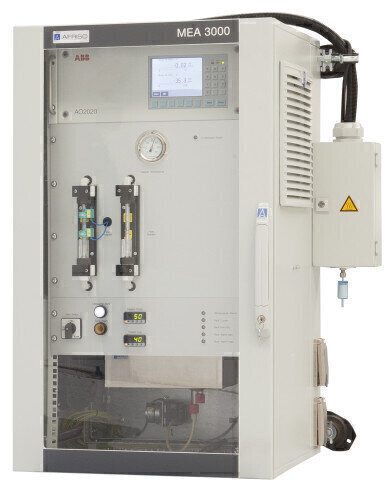CEMS
DNV GL-Certified Continuous Emission Monitoring System Launched
Oct 14 2015
In spite of a rather generous preparation period, the implementation of the reduced emission limit values for SOx in emission control areas (ECAs) as of January 01, 2015, caused quite a bit of turbulence in the marine industry. A decision for an exhaust gas cleaning system, a so-called scrubber, to comply with the new regulations implies major investments in planning and installing the scrubber. However, the confirmation of compliance hinges on a relatively small part of the complete system: on the continuous emission monitoring system (CEMS).
The new continuous emission monitoring system CEMS MEA 3000 from AFRISO (Germany) accounts for the current trend towards increased monitoring, analysis and control to achieve a more efficient overall performance in various areas on vessels. MEA 3000 according to MARPOL Annex VI monitors the actual values of CO2 and SO2 in the exhaust gas. In addition, this information can be used to optimise the scrubber settings and the control system. Determination and documentation of the emission values at any point in time as well as compliance with the limit values at any point along the route of the vessel are only possible in this way. With a Confirmation of Compliance, the DNV GL attests intelligent emission monitoring and compliance with the regulations as per MARPOL Annex VI and NOx Technical Code. A special focus was on minimum SO2 wash out by the system as proven experimentally and empirically in order to obtain precise measurements on an ongoing basis.
Real-world experience shows that reliability and availability are essential criteria of such a system in addition to measuring accuracy. In order to reach maximum reliability and availability, susceptibility to pollution and maintenance must be reduced to maximum extent possible. MEA 3000 provides special features for these purposes. The probe of MEA 3000 is equipped with an extra large filter. The large filter surface ensures an improved distribution of the dust and dirt particles and keeps the filter pores from being clogged for an extended period of time.
In order to completely exclude the possibility of filter clogging, the system can be equipped with a dual-stage backwashing unit. In a first step, this unit cleans the filter with compressed air; in a second step, the dirt is blown back though the probe pipe into the exhaust gas channel. All elements integrated into the MEA 3000 system are designed in such a way that they can be disassembled, cleaned or completely replaced by members of the crew of the vessel after a brief instruction. All these measures keep the downtime of the system to a minimum while drastically reducing the maintenance effort.
Digital Edition
IET 35.2 March
April 2025
Air Monitoring - Probe Sampling in Hazardous Areas Under Extreme Conditions - New, Game-Changing Sensor for Methane Emissions - Blue Sky Thinking: a 50-year Retrospective on Technological Prog...
View all digital editions
Events
May 06 2025 Nuremberg, Germany
May 10 2025 Karachi, Pakistan
May 11 2025 Vienna, Austria
May 11 2025 Seoul, South Korea
Salon Analyse Industrielle & Instrumentation
May 14 2025 Paris, France

.jpg)










_(4427399123)-(2).jpg)






